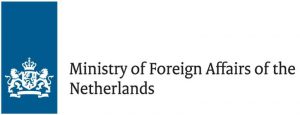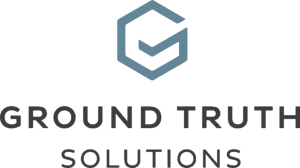Humanitarian Transparency
Humanitarian Data Transparency Series
At the World Humanitarian Summit in 2016, major global humanitarian actors came together and brokered the Grand Bargain. This involved a series of commitments in key areas. One commitment aimed to improve transparency. Four years on, significant gains have been made as part of the Transparency Workstreams’ agenda. However, certain transparency targets are still lagging and the full potential of more transparent humanitarian information is yet to be realised. This can only be done if the information made available is actively used and benefits local and national humanitarian responders. Without this important perspective, transparency risks becoming nothing more than a tool for financial compliance. With it, we might be able to better understand whether improved transparency can unlock new methods of communication and inclusiveness, and ultimately support relief efforts.
To contribute towards this evidence base, Publish What You Fund launched a project in early 2019 to investigate and better understand the user needs of on the ground humanitarian actors, particularly local and national responders. We were seeking to understand what challenges humanitarian actors in protracted crises faced in accessing and using data, and whether and how improved transparency and greater information sharing could help. The research has provided insights into potential changes that need to be made in order to make this information more useful and accessible to those on the front lines.
Our objectives
Funded by the Dutch Government and in partnership with Development Initiatives, Publish What You Fund and Ground Truth Solutions conducted research into the information needs of humanitarian actors as part of the Grand Bargain Transparency agenda. Our research had three key objectives:
- To increase understanding of the information needs and challenges of humanitarian actors on the ground, in particular local and national responders.
- To identify existing open data standards, platforms and tools, and assess their accessibility and usefulness in relation to meeting the needs and addressing the challenges identified.
- To identify possible improvements to open data standards, platforms and tools to better provide the information needed and in a way that makes it accessible to these actors.
Our Findings
As a result of this research, we have produced a series of four reports on humanitarian data transparency, each aligned with one of the four Grand Bargain Transparency Workstream commitments. The reports were published in June 2020:
Research Brief 1: Publication of humanitarian funding data – In this paper the research team presents its finding that funding data is of greater relevance to “coordinators” (e.g. recipient government officials and country-level coordination groups) than to “implementers” (usually the local level personnel who design and execute programmes and in turn report their activities “up the chain” to coordinators). The team also found that the quality of the available funding data is a serious concern and awareness and use of IATI data is lower than for data from the United Nations Office for the Coordination of Humanitarian Affairs (UN OCHA) Financial Tracking Service (FTS), which is itself used minimally. In addition, however, it was noted that non-financial IATI data could be of use to a variety of actors within humanitarian response, for example 3/4W, results and outcomes data.
Research Brief 2: Data collection, analysis and use in protracted humanitarian crises – In this paper the findings relate to issues of data quality and the differing needs of “coordinators” versus “implementers”; the former require more oversight information while the latter require management information to help design and implement their programmes. The lack of defined information management roles (including the people to fill them) inhibits collection and use of a range of different data types, including needs assessments, 3/4W, impact data, and monitoring data. Effective data sharing is undermined by limited and inconsistent data sharing practises. How best to treat sensitive data was found to be another challenge that all stakeholders needed to overcome when collecting, analysing and using data. Finally, data collection methodologies were found to often be unclear, or without rigour, suggesting that minimum quality control standards for data collection would be of value.
Research Brief 3: The use, challenges and opportunities associated with digital platforms – In this paper the research team presents its findings around awareness and use of different digital platforms for programming and publication purposes. The team found that the number and usability of existing platforms is, in the eyes of users, sufficient for accessing the operational and financial data they need. The team found that users want to be able to download raw data in easily accessible formats such as Excel and to be able to download the underlying methodologies to understand how data was collected, and thus more accurately determine its legitimacy and value. The team identified the most commonly used data platforms and considered issues around data quality and sharing, finding that inconsistency in reporting and underlying data quality issues inhibit data use.
Research Brief 4: Data use capacity in protracted humanitarian crises – In this paper the team identifies that data needs and corresponding capacity issues were similar across the two case study countries. The research finds that current funding models and reporting requirements inhibit data use capacity, particularly in local NGOs (but also INGOs) as they tend to receive less base funding, outside of projects, than other organisations, and do not have the time to report to multiple donors/platforms. Additionally, there is usually no explicit funding allocated to carry out needs assessments (a key requirement of on-the-ground organisations) and often either they cannot finance information management officer roles at all, or they lose their IM staff to bigger organisations. If data use capacity issues are addressed properly then it is likely that the use and publication of data (e.g. needs assessments, 3/4W, nutrition assessments, facility assessments, monitoring and evaluation data, and IATI data) among humanitarian organisations will also improve in the longer-term.
We have also produced two reports that take a deeper-dive into the information needs and challenges facing specific groups of on the ground humanitarian actors in our two case study countries: Bangladesh and Iraq. The research briefs each explore key issues facing front line responders accessing and using timely, comprehensive, and comparable data they require to make operational, programmatic, and financial decisions across these responses. While the specific findings vary across the two countries, the research has highlighted key challenges around data quality, a lack of data governance and leadership at the field level, and limited data use capacity.
The Bangladesh Country Report focuses on data transparency in the Rohingya crisis.
The Iraq Country Report focuses on data transparency in Erbil, northern Iraq.
Translated versions of these reports (Arabic, Kurdish and bangla) are also available here.
Methodology
We used a combination of quantitative and qualitative research approaches, involving four phases:
- Desk research & review;
- An initial quantitative instrument (an online survey);
- Qualitative in-country key informant interviews; and
- The production of final synthesis reports.
We decided to focus exclusively on protracted crises as they account for approximately 85% of total humanitarian aid. Therefore, we felt a case study approach gave us the greatest opportunity to understand these complex humanitarian environments, and better enable us to develop insightful conclusions and recommendations. Following a robust selection process, we opted for Iraq and Bangladesh.
Our full methodology is available here.




